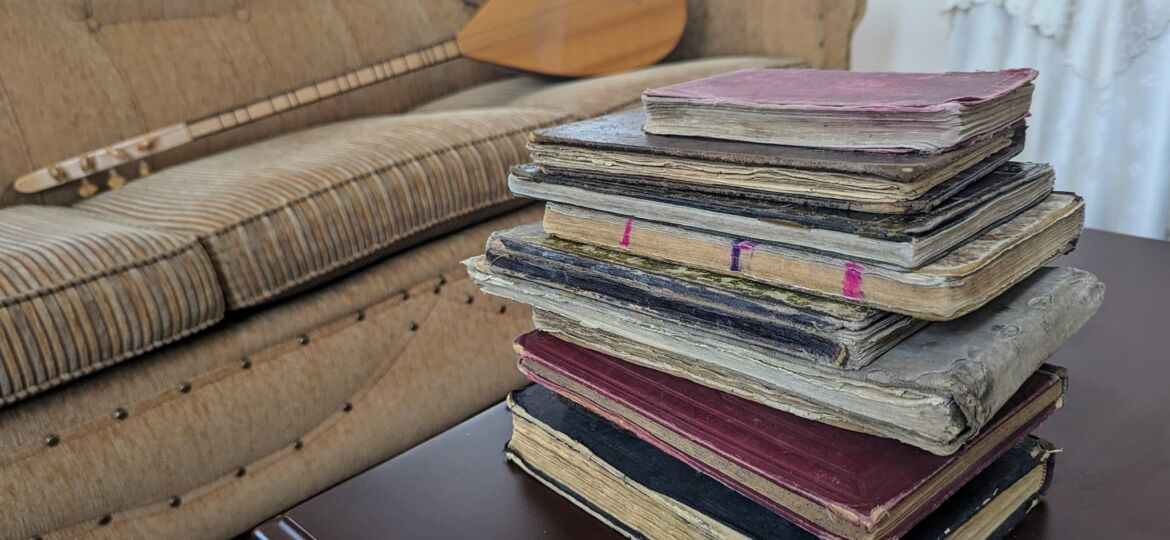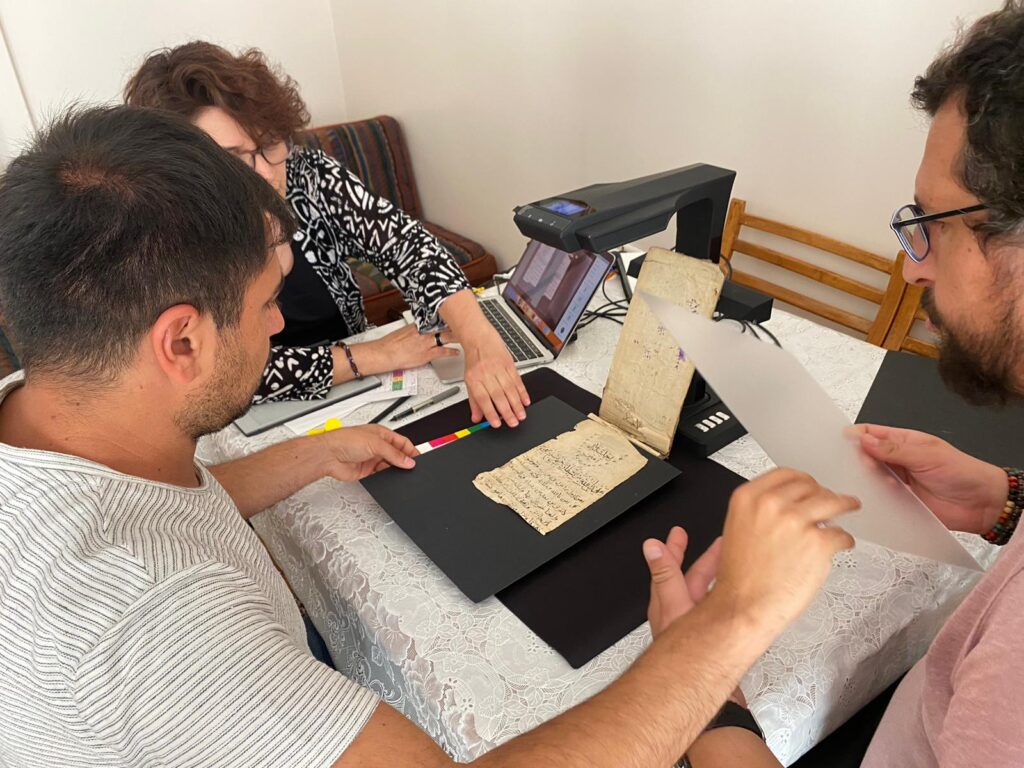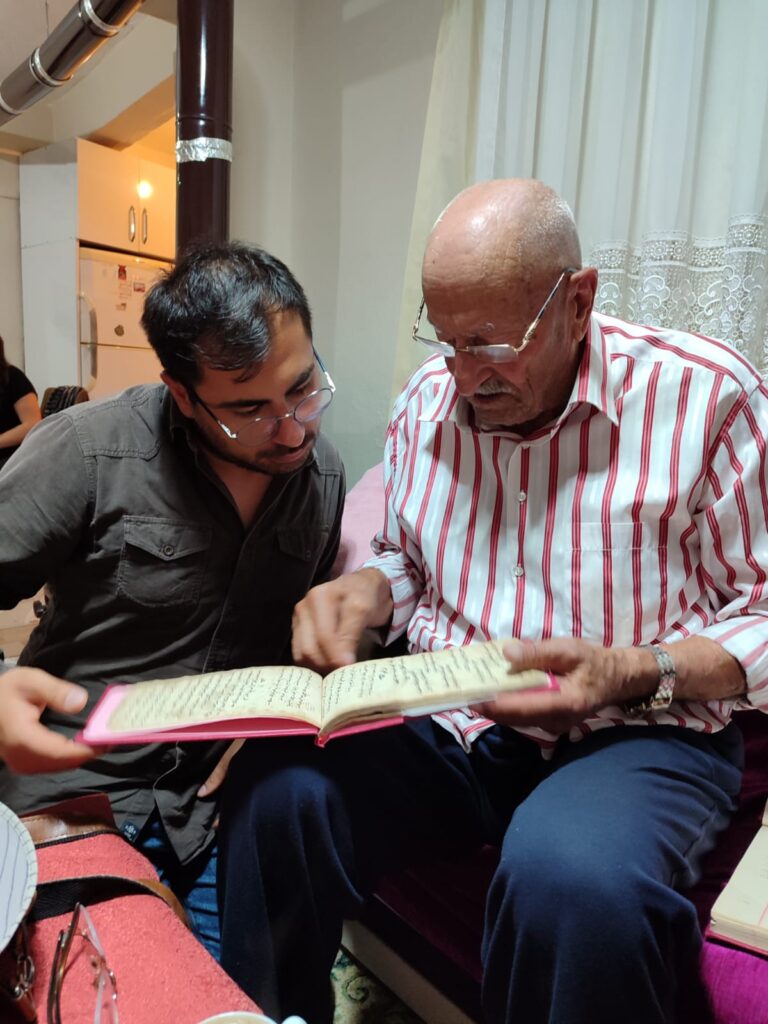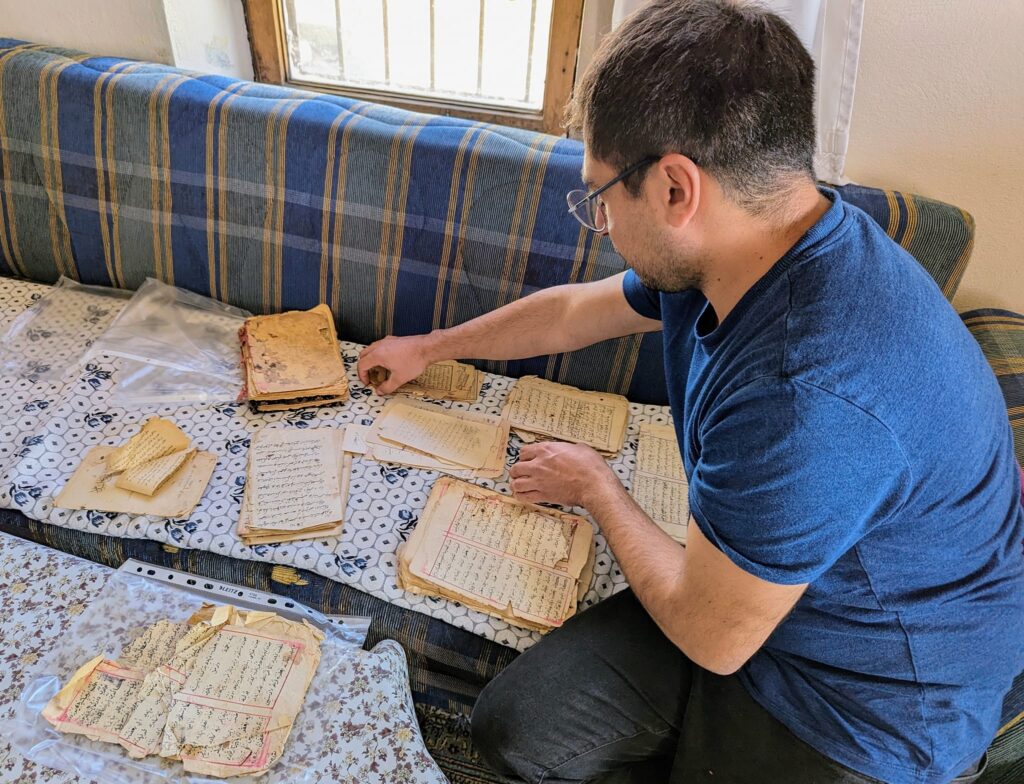
“If the asphalt road ends and you divert onto an unpaved, dusty road, you are likely to reach an Alevi village,” say Alevis, Turkey’s second biggest religious community. It may sound amusing, but there is a grain of truth in it. Alevi villages still do not receive proper public services. Yet, they always offer hospitality and muhabbet (conversation), where you nurture your soul with deyiş (Alevi mystical poetry) performed with the long-necked lute, the bağlama. Over the last year, I traveled to Alevi villages for my dissertation research, breathing the dust of roads and, at the same time, witnessing natural beauties in different parts of Anatolia. When I started researching the poetry notebooks of Alevis, I knew that I would find some sources in these villages. However, I never imagined finding out more about the Alevis’ written culture.
For a long time, Alevism has been considered “a syncretic folk Islam without written sources.” However, recently surfaced private archives and libraries of Alevi dede families (saintly lineages) have revealed that Alevis have a rich written culture. I had a chance to see this written culture closely during my field trips.
These trips were also the initial phase of the Alevi-Bektashi Digital Archive Project organized by Professor Ayfer Karakaya Stump from the College of William and Mary and Professor Cemal Kafadar from Harvard University. Our purpose was to conduct interviews, scan written sources, and locate sacred sites in Alevi villages. Later, this data will become a web-based project accessible to the public and researchers. To this end, armed with a portable scanner, we visited dozens of families in nine cities between August and November 2023. We conducted interviews with the elders and professionally scanned their books and manuscripts. As a result of these trips, we identified a diverse range of manuscripts and printed books preserved in family archives, many of which had never come to light. Among these sources are books and documents ranging from Sufi diplomas written in the sixteenth century to manuscript copies of Buyruks (authoritative accounts of basic Kizilbash-Alevi beliefs and rituals), from their poetry notebooks to the first printed edition of Atatürk’s Nutuk.

Scanning a cönk manuscript with Ayfer Karakaya Stump and Taylan Özdemir (Photograph: Hakan Erol)
How did these manuscripts and books in the libraries of a religious minority group like the Alevis, who had been subject to oppression by the Ottomans, survive until today? This question has always occupied my mind. We noticed that Alevis were not as disconnected from each other and Ottoman society as we had previously thought. For example, we encountered the manuscript of the sixteenth-century poet Virani’s Fakrname in a remote mountain village of Adıyaman, which is difficult to reach even by car today. This copy is dated back to 1643 and came to this village from Najaf, Iraq. Moreover, they were not a completely illiterate community. Their libraries demonstrate a growing literacy and book culture among Alevis, especially in the nineteenth century. There were Alevi dedes who received education and had served as teachers in their villages. Today, there are still Alevi dedes who can read and write in Ottoman Turkish and Arabic.

Haydar Altun (90) dede reading his cönk in Gümüşhacıköy, Amasya (Photograph: Ayfer Karakaya)
Regarding the Alevis’ written sources, researchers generally list certain known books such as Buyruk, Cavidanname, Faziletname, Hüsniye,etc. However, what particularly caught my attention in the libraries of Alevi dede families was the presence of numerous cönks, the sources I have been closely working on for my dissertation. These sources stand as a “great unread” that has remained unexamined by scholars of Alevism. Cönks are oblong notebooks in which Alevis wrote mystical poetry and various personal notes. They present the written form of the practice of religious life or scripturalization of the orally transmitted culture across generations. Approaching Alevi history through these sources, written by themselves, offers a different perspective beyond merely reading from specific references. They not only shed light on the literate culture of the Alevis but also provide rich data for understanding Ottoman book culture.

An archive of a dede family in Gölbaşı, Adıyaman. I detected six different manuscripts from a pile of torn leaves. Unfortunately, only a few are left from each (Photograph: Ayfer Karakaya)
As the private archives and libraries of Alevi dede families come to light, we further understand the richness of the Alevi cultural heritage. However, at the same time, it’s essential to realize that Alevi cultural heritage is increasingly endangered by plunder and disappearance over time. For years, books have not only been burned and buried due to political pressures but also unethically withheld from these families by some researchers who borrow and never return them. Furthermore, recent earthquakes have shown us that this cultural heritage is also vulnerable to being lost to natural disasters. What is under risk extends beyond books alone. In the last thirty years, Alevi villages have faced abandonment and there are only a few of the older generation left who continue practicing Alevism in the traditional way. Moreover, there are many sacred sites, from dilapidated historical Cemevis to ziyaret sites in villages submerged under dams, that need to be documented.

Dede Damı (bone ocax) of Şıh Ahmed Ocağı in Hozat, Tunceli (Photograph: Özkan Karabulut)
Archiving Alevi cultural heritage is not only crucial for the Alevi community but also important for preserving Anatolian cultural heritage. In particular, books and manuscripts produced or maintained in private archives of Alevi dede families would offer an alternative account to the social, cultural, and religious history of the Ottoman Empire. Unfortunately, Alevi institutions currently lack the resources to preserve this heritage. If there is not an awareness of the preservation of the Alevis’ cultural heritage, I am afraid these roads will remain dusty and unpaved for a long time.

